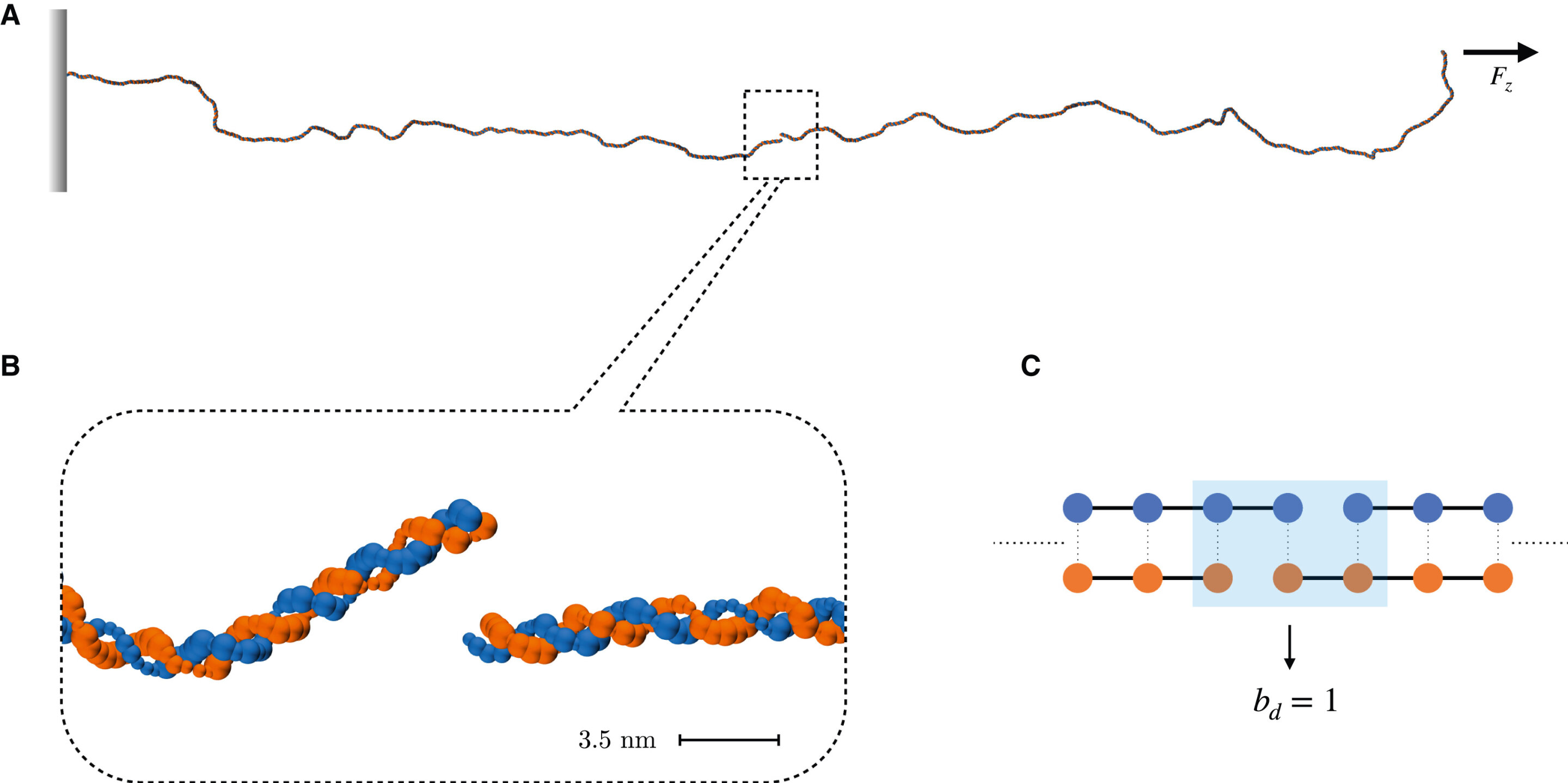Exposure to ionizing radiation is more frequent than we realize. Whether it’s from sunlight, X-rays, or even during air travel, these radiation sources can harm our DNA by damaging, breaking, or modifying its structure, potentially leading to the development of tumors.
A group of scientists, led by Raffaello Potestio and including Manuel Micheloni, Lorenzo Petrolli, and Gianluca Lattanzi, conducted a study on the rupture of DNA caused by ionizing radiation. They investigated the average time it takes for the DNA strand to break after exposure to radiation. Interestingly, they discovered that the greater the distance between damaged areas of DNA, the longer the DNA structure remains intact. This provides more time for the cell to repair the damage. The findings have been published in the Biophysical Journal.
Using Computational Models
The researchers utilized computer simulations to create a double-stranded DNA sequence, similar to a video game. They simulated radiation damage on the DNA and observed its behavior. One of the most severe consequences of radiation impact on DNA is the double-strand break (DSB), which refers to the interruption of the DNA skeleton in both complementary strands, affecting their structural and chemical continuity.
These types of injuries can have severe consequences at the cellular level. The scientists discovered that the DNA strands do not break immediately, and the time it takes for a strand to break increases exponentially with the distance between breaks in the DNA strands. They were able to formulate a law for average rupture times based on this distance between strand breaks. Raffaello Potestio emphasizes the significance of this information in understanding the effectiveness of DNA repair processes.
Rupture Time and Repair Process
Cells possess a complex enzymatic system that controls and maintains DNA, which is activated upon detecting signs of DNA damage. However, this mechanism does not activate immediately after the damage occurs, and any delays can affect the normal functioning of the cell. If modifications occur in the DNA sequence, they might not be impactful if they result from one or more synonymous mutations, leading to the synthesis of the same protein.
However, substantial changes in the DNA sequence or errors in the repair process can have more serious implications. In the best-case scenario, the cell undergoes programmed cell death (apoptosis) as it recognizes the incorrect or irreparably damaged sequence. In the worst-case scenario, the cell repairs the DNA chain, which can result in mutations or changes in the nucleotide sequence, potentially leading to dysfunctional behavior, genetic modifications, chromosomal mutations, or the development of cancer.
From Simulation to Real-World Applications
The researchers believe that this study has significant implications for the field of radiobiology and represents a crucial first step towards advancements in medical treatment and prevention. The use of numerical simulation techniques in this study opens the possibility of experimental replication in laboratory settings—a goal the researchers aim to achieve.
Understanding the effects of radiation on damaged DNA can potentially lead to the development of more precise radiotherapeutic treatments in the long run. Raffaello Potestio explains that this study serves a dual purpose: gaining insights into the mechanisms causing cellular damage to prevent or limit such damage, and finding the best methods to maximize damage—particularly in the field of proton therapy, which utilizes ionizing radiation, specifically protons, to target and eliminate cancer cells.
“Radiotherapy encompasses complex issues, such as accurately locating radiation deposited in cancer tissues to prevent harm to healthy cells. The more we comprehend the consequences of radiation and DNA strand breakage, the better prepared we’ll be to develop alternative treatments and minimize side effects,” concludes Potestio.
More information:
Manuel Micheloni et al, Kinetics of radiation-induced DNA double-strand breaks through coarse-grained simulations, Biophysical Journal (2023). DOI: 10.1016/j.bpj.2023.07.008
Provided by
Università di Trento
Citation:
The link between the impact of radiation on DNA and the time in which the damaged molecule breaks irreversibly revealed (2023, August 9)
retrieved 9 August 2023
from https://phys.org/news/2023-08-link-impact-dna-molecule-irreversibly.html
This document is subject to copyright. Apart from any fair dealing for the purpose of private study or research, no
part may be reproduced without the written permission. The content is provided for information purposes only.
Denial of responsibility! SamacharCentrl is an automatic aggregator of Global media. In each content, the hyperlink to the primary source is specified. All trademarks belong to their rightful owners, and all materials to their authors. For any complaint, please reach us at – [email protected]. We will take necessary action within 24 hours.

Shambhu Kumar is a science communicator, making complex scientific topics accessible to all. His articles explore breakthroughs in various scientific disciplines, from space exploration to cutting-edge research.


